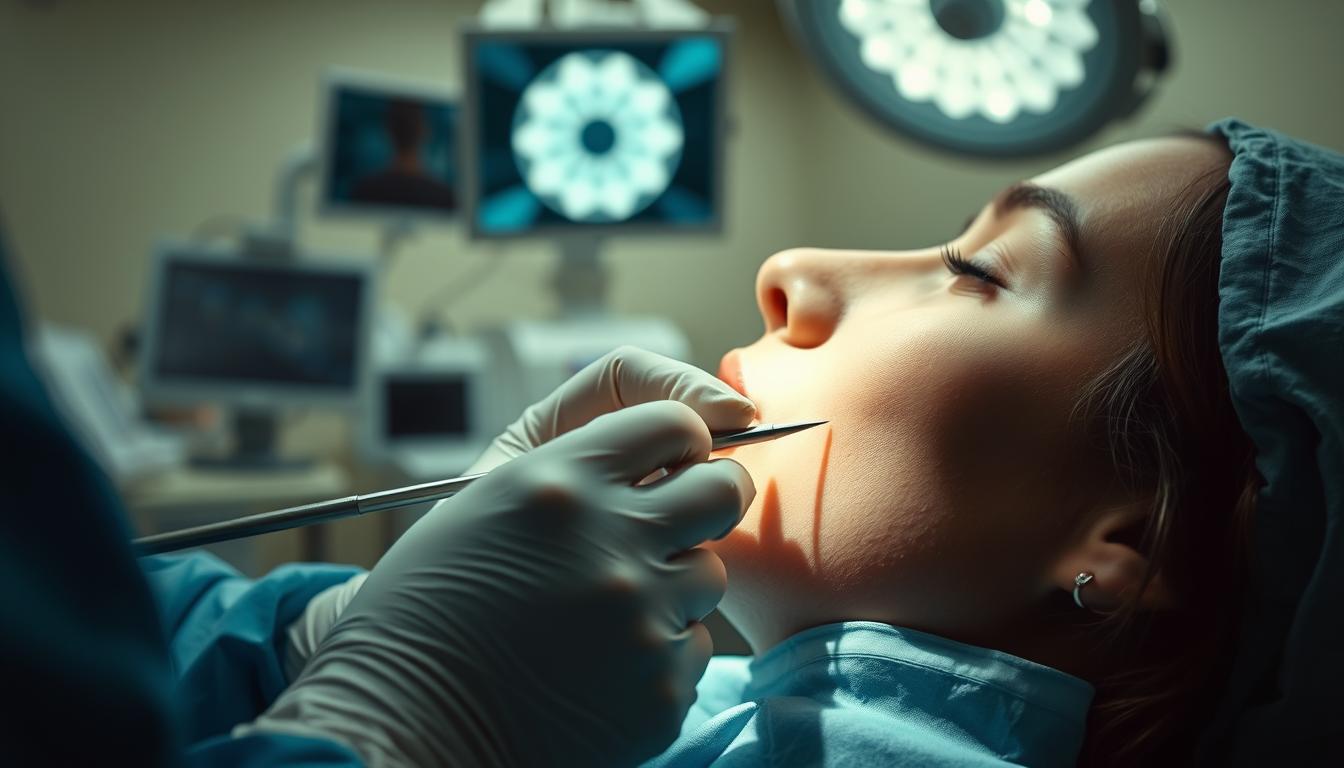Cheekbone surgery represents a significant advancement in facial aesthetic procedures, offering both surgical and non-surgical options to enhance facial contours. This transformative procedure focuses on reshaping or augmenting the cheekbones to create more defined facial features.
Modern techniques can address various concerns, including age-related volume loss, naturally flat cheeks, or facial asymmetry, thereby improving overall facial harmony and appearance. By understanding the full scope of cheek enhancement options, patients can set realistic expectations and choose the approach that best suits their aesthetic goals and health considerations.
Key Takeaways
- Cheekbone surgery offers both surgical and non-surgical options to enhance facial contours.
- The procedure can address age-related volume loss, naturally flat cheeks, or facial asymmetry.
- Understanding the full scope of cheek enhancement options helps patients set realistic expectations.
- Patients can choose the approach that best suits their aesthetic goals and health considerations.
- Cheekbone surgery can improve overall facial harmony and appearance.
Understanding Cheekbone Surgery
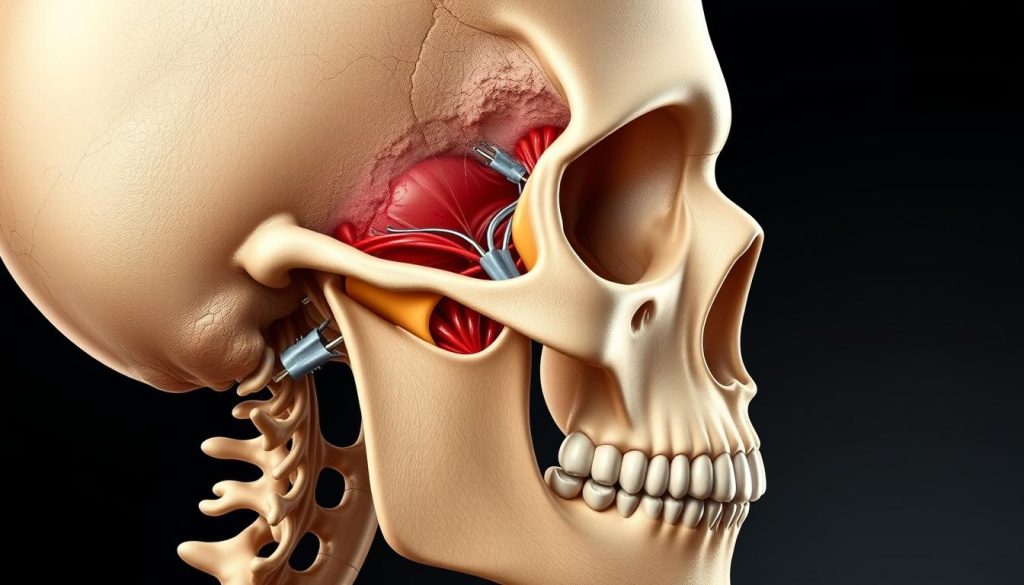
Cheekbone surgery, a cosmetic procedure aimed at enhancing facial aesthetics, has become increasingly popular. The allure of high cheekbones has driven the demand for cheekbone surgery in recent years.
Definition and Purpose
Cheekbone surgery, medically referred to as malar augmentation, is a procedure designed to enhance the appearance of the cheekbones. Its primary purpose is to create a more defined facial structure, contributing to a more youthful and attractive appearance. By augmenting the cheekbones, individuals can achieve a more balanced facial harmony.
Aesthetic Importance of Cheekbones
High cheekbones are universally recognized as a key component of facial attractiveness. They create a natural lifting effect, providing structure to the midface. The aesthetic importance of cheekbones is highlighted by their influence on how light and shadow play across the face, affecting overall appearance. As people age, the natural fat pads in the cheeks descend, leading to a flatter, more aged look.
Types of Cheekbone Enhancement Procedures
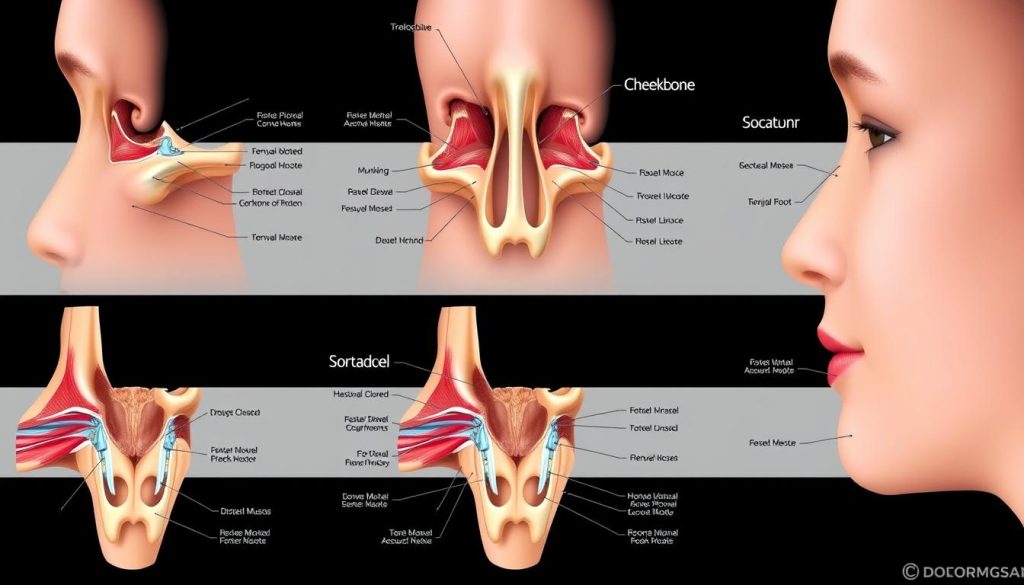
Cheekbone augmentation can be achieved through various procedures, each with its own benefits and considerations. The choice between surgical and non-surgical options depends on individual preferences and the desired outcome.
Surgical Options with Implants
Surgical cheekbone enhancement involves the use of implants to increase the prominence of the cheekbones. This procedure is performed under local anesthesia and can provide long-lasting results. The implants are designed to be durable and are made from materials that are compatible with the body.
Non-Surgical Alternatives with Fillers
For those who prefer a less invasive approach, non-surgical cheekbone enhancement using fillers is a viable option. Fillers can be used to add volume to the cheek area, creating a more defined appearance. The effects of fillers are temporary, typically lasting several months to a year.
Botox for Cheekbone Definition
Botox can also be used to enhance cheekbone definition by relaxing specific facial muscles. This subtle approach can create the appearance of more prominent cheekbones. The effects of Botox last for around three to six months, requiring regular maintenance to sustain the desired appearance.
The choice of procedure depends on individual goals and preferences. It is essential to consult with a qualified professional to determine the most suitable option.
Candidacy for Cheekbone Surgery
The suitability of a candidate for cheekbone surgery is determined through a thorough assessment. This evaluation is crucial to ensure that the individual is a good fit for the procedure and to minimize potential risks.
Ideal Candidates
Ideal candidates for cheekbone surgery are those who have a clear understanding of the procedure and its outcomes. They should be in good health and have realistic expectations about the results. A consultation with a qualified plastic surgeon is essential to determine suitability.
Medical Considerations and Contraindications
Certain medical conditions may contraindicate cheekbone surgery, such as uncontrolled diabetes or blood clotting disorders. Patients must disclose their medical history, including any medications or supplements they are taking, to their plastic surgeon Smoking cessation is also required at least 2-4 weeks before and after surgery to ensure proper healing and minimize complications.
Preparing for Your Cheekbone Surgery
Before undergoing cheekbone surgery, it’s vital to understand the necessary preparations to ensure a safe and effective procedure.
Finding a Qualified Surgeon
Selecting a qualified and experienced surgeon is crucial for a successful cheekbone surgery. Ensure your surgeon is board-certified and has a proven track record in performing cheekbone surgeries.
Pre-Surgery Consultation
During the pre-surgery consultation, discuss your goals, medical history, and any concerns with your surgeon. This is also an opportunity to understand the procedure, risks, and what to expect during recovery.
Medical Evaluations and Adjustments
Pre-operative medical evaluations typically include blood tests and a physical examination. Certain medications and supplements that increase bleeding risk, such as aspirin and NSAIDs, must be discontinued 2-4 weeks before surgery. Your surgeon may also prescribe pre-operative medications, such as antibiotics to prevent infection.
Smoking cessation is mandatory for at least 2-4 weeks before and after surgery to promote proper healing. Patients with chronic conditions like hypertension or diabetes must have these conditions well-controlled before proceeding with elective cheekbone surgery.
The Cheekbone Surgery Procedure Explained
The cheekbone surgery procedure involves a series of meticulous steps to achieve the desired outcome. A skilled surgeon will guide the patient through this process, ensuring a safe and effective operation.
Anesthesia Options
To minimize discomfort during the procedure, anesthesia options are carefully considered. The type of anesthesia used depends on the complexity of the surgery and the patient’s overall health.
Incision Techniques and Locations
The surgeon will create incisions according to a predetermined plan, taking into account the type of implants or technique used. The location and size of incisions are crucial to minimize visible scarring.
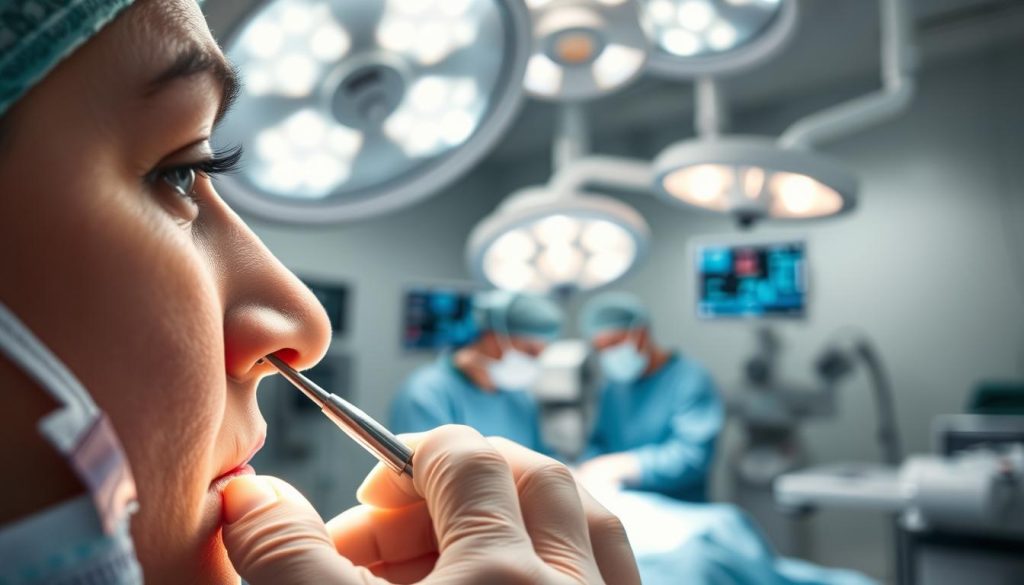
Procedure Duration and Process
The cheekbone surgery procedure typically takes between 1-2 hours to complete when performed as a standalone operation. The time may vary depending on the complexity of the case and the technique used. The process involves administering anesthesia, creating precise incisions, and carefully placing cheek implants or performing tissue manipulation to enhance the cheekbone area.
The procedure concludes with meticulous closure of incisions using fine sutures, application of dressings, and possibly placement of temporary drains to prevent fluid accumulation, ensuring a smooth recovery.
Recovery After Cheekbone Surgery
Understanding the recovery process after cheekbone surgery can help patients prepare for the journey ahead. The recovery phase is crucial for achieving the desired outcome and minimizing potential complications.
Immediate Post-Operative Care
Immediate post-operative care is vital for a smooth recovery. Patients are advised to follow their surgeon’s instructions carefully, which may include keeping their head elevated, applying ice packs to reduce swelling, and taking prescribed medications to manage pain and discomfort.
Managing Swelling and Discomfort
Managing swelling and discomfort is a key aspect of the recovery process. Swelling typically subsides within a few days, and patients can aid this process by using ice packs and keeping their head elevated. Discomfort can be managed with prescribed pain medication.
Timeline for Returning to Normal Activities
Most patients can return to light, non-strenuous activities within 3-5 days after cheekbone surgery. Work resumption typically occurs within 7-10 days, though those with physically demanding jobs may require 2-3 weeks before returning to full duties. It’s essential to allow the body sufficient time to heal to ensure optimal results with cheek implants.
The final results of cheekbone surgery become visible after a few weeks, once the swelling has completely subsided. By understanding the recovery timeline, patients can better plan their return to normal activities and work.
Potential Risks and Complications
While cheekbone surgery can enhance facial aesthetics, it’s crucial to understand the potential risks and complications associated with the procedure. As with any surgery, there are risks involved that patients should be aware of to make an informed decision.
Common Side Effects
Common side effects of cheekbone surgery include swelling, bruising, and discomfort. These are typically temporary and managed with medication. Swelling is one of the most common side effects and usually subsides within a few weeks.
Serious Complications
Serious complications, although rare, can occur. These include infection, asymmetry, and nerve damage. It’s essential to follow the surgeon’s instructions to minimize these risks. Infection can be a serious complication and may require additional treatment.
When to Contact Your Surgeon
Patients should contact their plastic surgeon immediately if they experience severe pain, excessive swelling, fever over 100.4°F, unusual discharge from incision sites, or sudden changes in sensation or appearance of the cheek area. Prompt attention can prevent minor issues from becoming major complications.
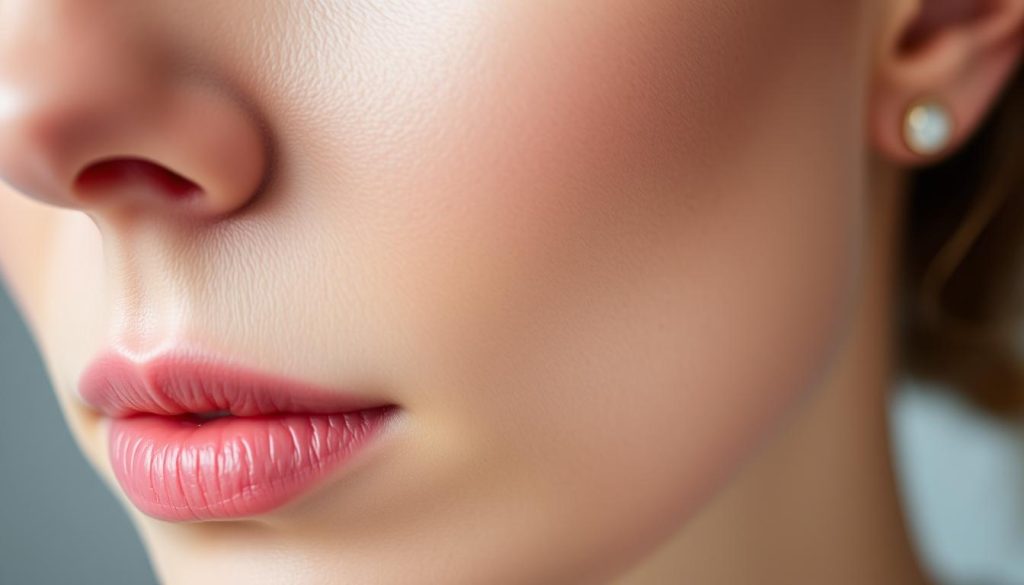
Results and Expectations
Having a clear understanding of what to expect from cheekbone surgery is vital for achieving satisfaction with the outcome. Cheek implants are a permanent cosmetic procedure that adds volume to your cheeks, enhancing the overall facial structure.
Timeline for Visible Results
The timeline for visible results after cheekbone surgery varies. Initially, the face may appear swollen, but as swelling subsides, the enhanced cheekbones become more apparent. It may take a few weeks to a few months for the final results to be fully visible.
Longevity of Results
Cheek implants provide long-lasting results. Since they are a permanent solution, the enhanced cheekbones can last for many years, potentially a lifetime. However, the natural aging process continues, and the overall appearance of the face may change over time.
Setting Realistic Expectations
Setting realistic expectations is crucial. Patients should understand that while cheekbone enhancement can significantly improve their appearance, it may not completely transform their look. Factors such as natural asymmetry and the aging process should be considered. A thorough consultation with a surgeon, potentially including computer imaging, can help in setting realistic goals.
| Expectation | Reality |
|---|---|
| Perfect Symmetry | Most faces have natural asymmetry |
| Transformation | Improvement, not complete transformation |
| Stopping Aging | Aging process continues despite implants |
Making an Informed Decision About Cheekbone Surgery
Before opting for cheekbone surgery, individuals should carefully evaluate their motivations and the potential outcomes. Making an informed decision about cheekbone surgery requires a thorough understanding of the procedure, its benefits, and the potential risks involved. It’s essential to consult with a qualified plastic surgeon who can provide personalized guidance based on your unique facial structure and aesthetic goals.
By exploring all available options, including both surgical and non-surgical approaches, you can determine the best course of action to achieve your desired look. Reviewing before-and-after photos of people with similar facial structures can help you develop realistic expectations about the potential outcomes of cheekbone surgery or cheek implants.
FAQ
What is the typical recovery time for cheek implant procedures?
The recovery time can vary, but most people can return to their normal activities within 2-4 weeks. Swelling and bruising may take several months to fully resolve.
Are cheek implants a permanent solution?
Cheek implants are considered a long-term solution, but they may not be entirely permanent. The implants can last for many years, and in some cases, a lifetime. However, the surrounding tissue and bone structure can change over time, affecting the appearance of the implants.
Can I undergo cheekbone enhancement with fillers if I have had previous facial plastic surgery?
It is possible to have cheekbone enhancement with fillers after previous facial plastic surgery, but it’s crucial to consult with a qualified surgeon to determine the best course of treatment and ensure that the fillers will not interact with any previous implants or surgical changes.
What are the potential risks associated with cheek implant procedures?
As with any surgical procedure, there are risks associated with cheek implant procedures, including infection, scarring, and implant displacement or rejection. A qualified surgeon will discuss these risks and help minimize them.
How long does the cheekbone enhancement procedure with fillers last?
The duration of cheekbone enhancement with fillers varies depending on the type of filler used, the individual’s metabolism, and other factors. Generally, results can last from 6 months to 2 years before a touch-up is needed.
Can I combine cheekbone enhancement with other facial procedures?
Yes, cheekbone enhancement can be combined with other facial procedures, such as facelifts or eyelid surgery, to achieve a more comprehensive facial rejuvenation. A qualified surgeon will help determine the best combination of procedures to achieve the desired results.
What is the difference between cheek implants and fillers?
Cheek implants are a surgical solution that involves placing a solid material, usually made of silicone or other biocompatible materials, into the cheek area to enhance its shape and volume. Fillers, on the other hand, are a non-surgical solution that involves injecting a gel-like substance, usually made of hyaluronic acid or other materials, into the cheek area to add volume and definition.
